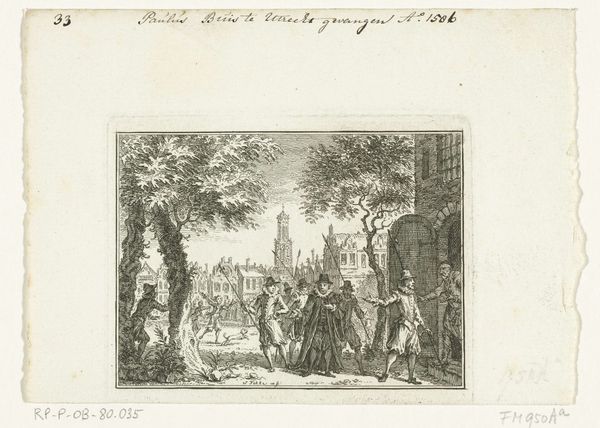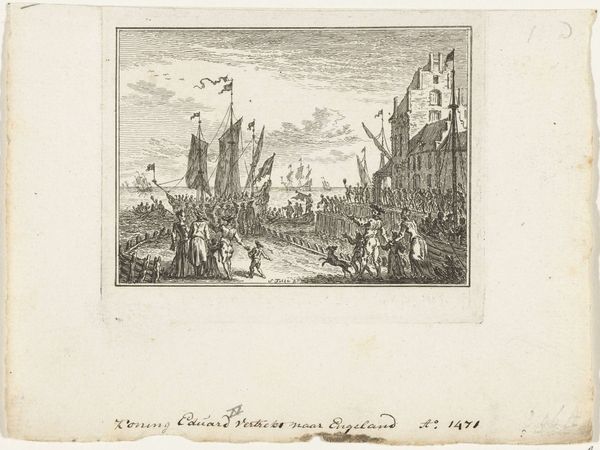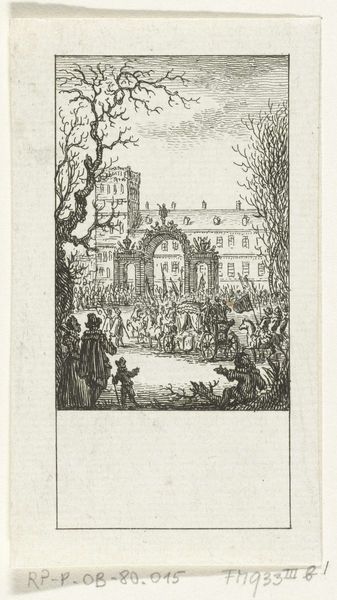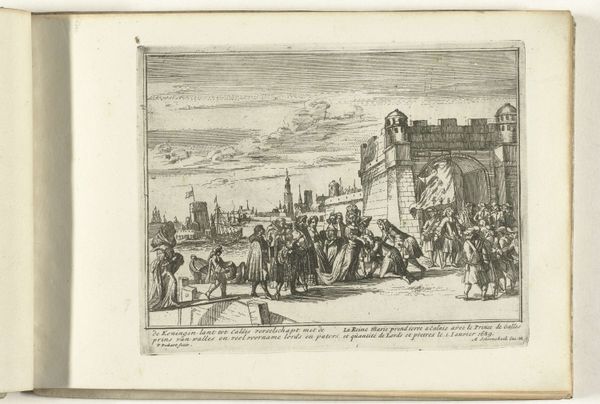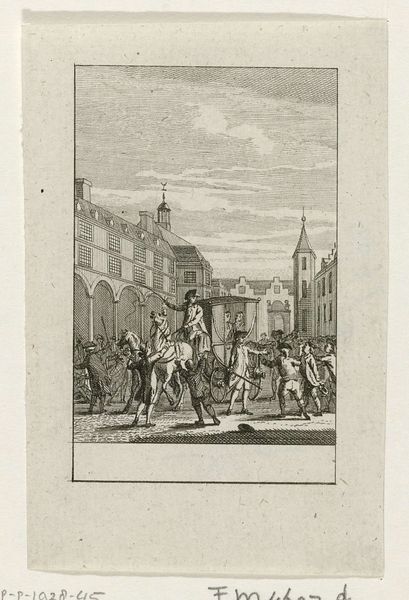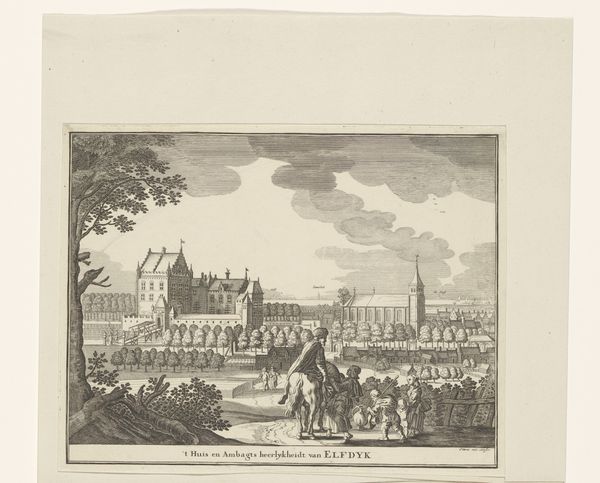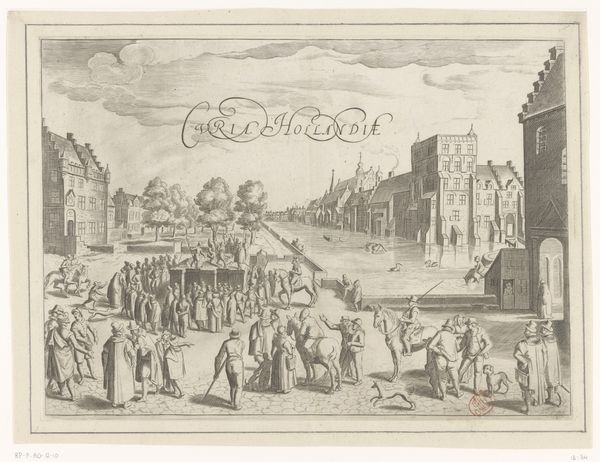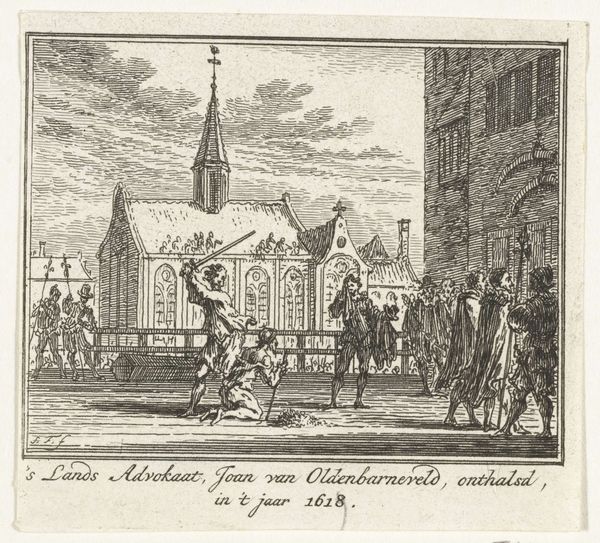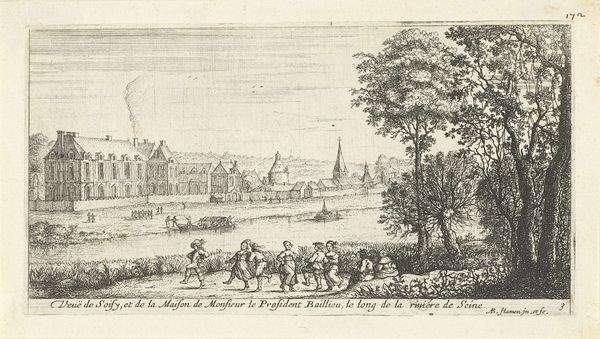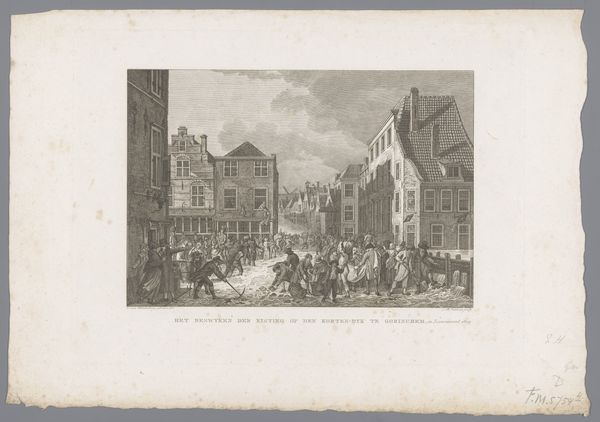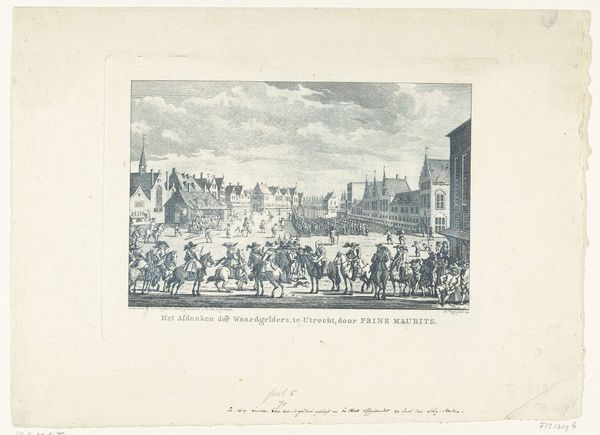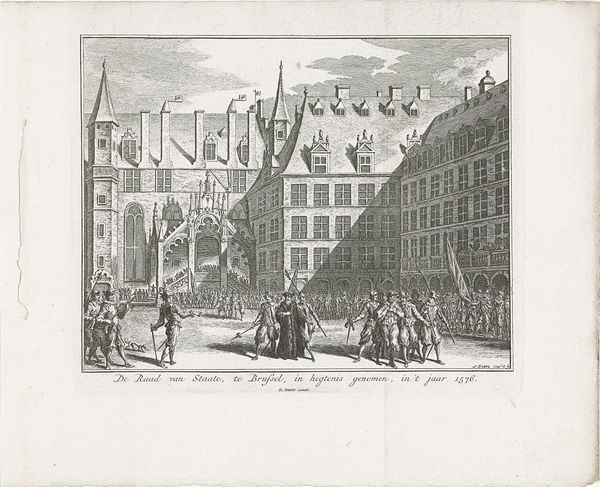
print, engraving
# print
#
landscape
#
history-painting
#
engraving
Dimensions: height 90 mm, width 107 mm
Copyright: Rijks Museum: Open Domain
This print, "Deventer betrayed by Stanley, 1587," was made by Simon Fokke in the 18th century using the intaglio process of etching. In this technique, a metal plate, likely copper, would have been coated with a waxy, acid-resistant substance called a 'ground.' Fokke would then have used a sharp needle to draw the image, exposing the metal. Dipping the plate in acid would bite away at the exposed lines, creating grooves. The deeper the bite, the more ink it would hold. Once inked, the plate would be pressed onto paper, transferring the image. Look closely at the image: you can see how the etched lines create tone, texture, and form. The labor-intensive method of etching imbues the scene with a sense of crafted detail, a deliberate choice that speaks to the importance of historical accuracy and storytelling. While etching was increasingly common during the 1700's, a means of quickly reproducing images for mass consumption, Fokke's skillful handling of the medium elevates it beyond mere reproduction, transforming it into a work of art.
Comments
No comments
Be the first to comment and join the conversation on the ultimate creative platform.
